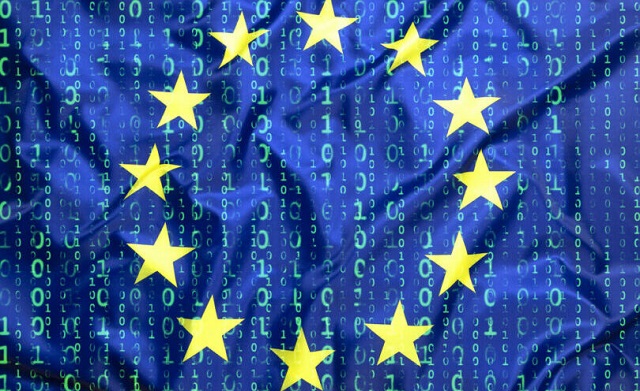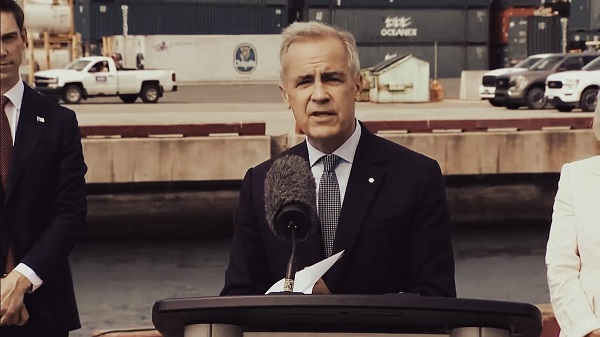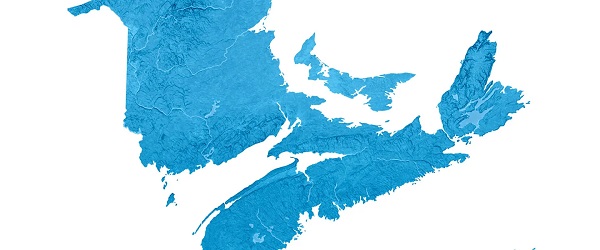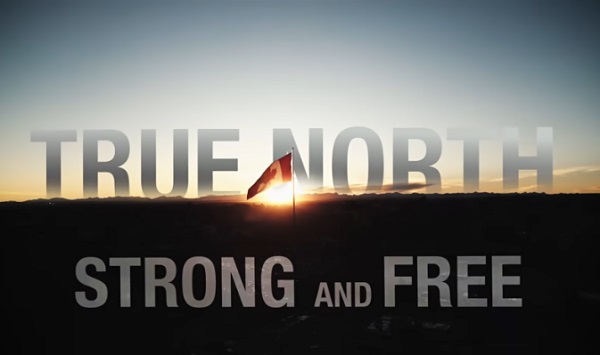Business
How the EU could combine carbon passports, digital ID, and social credit for every product

From LifeSiteNews
The European Union is going deep with its plans to introduce digital IDs across industries. Tying a form of digital ID to all products would make the introduction of carbon social credit scores easier to implement.
The concept of “carbon passports,” proposed as a measure to combat climate change, has, for a while now, raised significant concerns regarding civil liberties. These passports are designed to track an individual’s carbon footprint, including travel, energy consumption, and lifestyle choices. While their intention is to encourage environmentally friendly behaviors, they present a substantial threat to personal privacy by enabling continuous monitoring of personal activities.
This intrusion into privacy is not the only issue; carbon passports could potentially lead to discriminatory practices. Those in lower-income brackets, who often have limited access to green alternatives, might find themselves unfairly penalized. This system risks exacerbating social inequalities by disproportionately affecting those less financially equipped to make eco-friendly choices.
Furthermore, carbon passports could restrict movement and personal autonomy. Limiting travel or certain activities based on carbon usage might create a situation where only the wealthy, who can afford carbon offsets or sustainable options, maintain their freedom. This scenario paints a disturbing picture of environmental responsibility being accessible only to those with financial means.

Another concern is the centralization of power in the hands of entities controlling the carbon data. This centralization could lead to a slippery slope where tools designed for climate control evolve into instruments of more oppressive surveillance and control. The balance between addressing environmental concerns and maintaining civil liberties is delicate and crucial.
As part of the push towards carbon passports, a new idea – tying a form of digital ID to all products is also being pushed. It makes the introduction of carbon social credit scores easier to implement.
The European Union is going deep with its plans to introduce digital IDs (in this case, “digital product passports, DDPs”) across industries. DDPs specifically refer to apparel, accessories and electronics.
Brands are now starting to work on integrating the tech – that the European Commission says is necessary for the greater good of citizens, such as meeting “sustainability goals” – the so-called green deal, carbon emissions, all the things – and then there’s access to services and contactless payment.

Critics, on the other hand, say it’s simply yet another way to abuse consumers by harvesting even more of their data. The opponents’ fears appear to rely on solid facts since some of the data collected thanks to the EU’s proposed scheme will profile people based on their behavior, preferences, and even the value of their “resale profile.”
The deadline mentioned is as early as 2026 – that’s how soon brands would have to incorporate digital passports into their products.
And, don’t expect any resistance from brands. Reports are saying that they are working hard to meet the deadline of meeting what is referred to as the European Commission’s “real-world uses for digital identities.”
READ: EU claims digital ID wallet will be voluntary. India said the same before it became mandatory
On the side of the fashion industry, there will be the need to let the EU know – no longer voluntarily – about how they manufacture items, organize their supply chains, and the materials used.
Well, don’t expect brands to only implement the tech to make the EU feel good about itself. “Brands currently testing the technology are figuring out ways for it to collect customer data and add perks beyond the point of purchase,” writes Vogue Business.
Already trying to go a step above linking physical items with digital identity – as is the case with QR and NFC – and meet EU goals are the likes of Balenciaga, RealReal, and Boss, the article mentions.

And unlike that “old tech” that was there mostly to facilitate and protect transactions, manufacturers and customers, Mojito CEO Raakhee Miller had this interesting take on what’s referred to as the upcoming, “physical first” method: it “not only enhances the product’s value,” said Miller, “but also deepens consumer engagement.”
So, how deeply does the EU – and brands following its diktat – want to “engage” customers, other than people handing over money for a product they buy? This is where what’s basically data harvesting and mining comes into play, even if it is explained in fancy (and unsurprisingly, equally meaningless) terms like “phygital goods” and “metaverse approach.”
But, so to speak, the proof is in the word salad: the point is to have services and use cases “more anchored in client needs.” And clearly, to know what those needs are, one must first better know the client. Meaning, beyond what the client is currently comfortable sharing with multinational conglomerates.
Can’t we all just buy what we want, and move along? Please?
Not so fast, the EU says, and people like Vestiaire Collective VP of Partnerships Laura Escure explain it by no less than what might seem to many as basically questioning the customers’ cognitive abilities.
“The barriers around Web3 were not helping consumers to think thoroughly about luxury,” Escure is quoted.
READ: World Bank president advocates global digital ID scheme at tech summit
And did you know that if you dish out a lot of money on a luxury product, there’s a whole “story” behind it – beside the one in your bank statement? That’s how Aura Blockchain Consortium CEO Romain Carrere wants you to think about the situation.
“We believe in a future where every customer feels connected to the story behind their products, and the DPP is the key to unlocking that narrative. It’s not just a digital passport, it’s a journey of trust and empowerment for every consumer,” said Carrere.
But mostly, it would seem, it’s a narrative. There to empower itself, and those in positions of power, rather than the customer.
Back in EU’s bureaucracy, the digital product passport proposals first saw the light of day in the spring of 2022, naturally, as “sustainability” enhancing mechanisms related to products, and about a year later, this was officially presented on the European Commission website as a way to share key information about a product.
The information would be shared “across all the relevant economic actors,” a press release said in May 2023. Things are happening in this space under the Proposal for Ecodesign for Sustainable Products Regulation (ESPR).
The EU claims its goals are to boost what it calls circular economy, material and energy efficiency, and extend product lifetimes, as well as the way waste from those products is eventually handled.
The bloc also declares some grand ambitions here – like creating new business opportunities – “based on improved data access,” though.
And the EU is not above putting down consumers either, while at once working to elevate the level of data scrounged off of them. The DDP scheme, the Commission says, will “help consumers in making sustainable choices.”
And, for now – “allow authorities to verify compliance with legal obligations.”
Reprinted with permission from Reclaim The Net.
Business
Carney’s Ethics Test: Opposition MP’s To Challenge Prime Minister’s Financial Ties to China

Brookfield’s 2017 purchase of Teekay Offshore tied it to a corporate family whose LNG arm partnered with China’s COSCO to ship Russian Arctic gas under the shadow of Crimea-era sanctions.
In 2017, Brookfield, the investment giant that would later launch Prime Minister Mark Carney’s global business and political reach, bought control of Teekay Offshore Partners — a shipping deal that now casts a long geopolitical shadow.
On the surface, it looked like just another Brookfield deal. But behind it lies a complicated backstory, one that deepens concerns about the global-security risks lurking beneath Carney’s sprawling portfolio of more than 550 corporate holdings.
Teekay Offshore was part of the wider Teekay corporate family, which also included Teekay LNG Partners. That LNG arm entered a major joint venture with China LNG Shipping (CLNG), a subsidiary of COSCO, the Chinese state-owned shipping giant. Together, they financed and operated six ice-breaking carriers built to transport Russian natural gas from the Arctic Yamal LNG project.

The timing could hardly have been more sensitive. The Teekay-COSCO venture was launched in 2014 — the same year Russia seized Crimea and the West hit Moscow with sanctions. Five years later, in 2019, the U.S. government sanctioned a COSCO affiliate for carrying Iranian oil, which briefly caused Teekay’s joint venture with COSCO’s China LNG Shipping on the Arctic Yamal project to be treated as a “Blocked Person” under American rules.
The sanction was lifted after COSCO restructured its ownership.
Brookfield never owned Teekay LNG; its stake was in the Teekay Offshore arm, a separate division of the Teekay corporate family. But the two companies shared the Teekay brand, and as long as Brookfield remained tied to that structure, it was positioned uncomfortably close to a Sino-Russian natural gas venture that Washington had already flagged as risky.
COSCO – or China Ocean Shipping Company, a state-owned maritime giant – is a story in itself.
It has repeatedly faced U.S. scrutiny over its potential role in illicit and sensitive activities. In 1996, U.S. Customs agents seized 2,000 disassembled Chinese assault rifles hidden in containers on a COSCO ship at the Port of Oakland, allegedly bound for Mexican drug cartels. While official blame fell on Poly Technologies Inc. — a Chinese arms exporter — and the smuggling network behind the shipment, the incident heightened concerns about COSCO’s links to Beijing’s military and underground proliferation networks.
Other troubling episodes include a 1993 incident involving a COSCO vessel suspected of carrying chemical-weapons precursors to Iran, a 2015 seizure of explosives on a COSCO ship in Colombia headed for Cuba, and the 2019 U.S. sanctions on COSCO subsidiaries for violating Iran oil embargoes.
The Bureau has also reported on Canadian concerns. In December 1999, former Crown prosecutor Scott Newark wrote to an Ottawa intelligence review panel, noting that Canadian intelligence officials had long scrutinized COSCO’s activities at Vancouver’s port, citing alleged ties to both Chinese Triads and the People’s Liberation Army.
As Carney steps back into Parliament today, he is likely to face scathing questions from the Opposition not only about his Brookfield holdings and potential conflicts tied to deals like Teekay, but also over his government’s billion-dollar loan to BC Ferries for vessels built at a Chinese state-owned shipyard linked to Beijing’s civil-military fusion strategy.
This is where Carney himself enters the Brookfield story. After stepping down from the Bank of England in 2020, he joined Brookfield as Vice Chair and Head of ESG and Impact Investing. He later became Chair of Brookfield Asset Management. That means while Brookfield was still closely tied to Teekay Offshore, Carney was one of the most senior figures shaping Brookfield’s strategy — and holding significant personal stakes in its success.
Today, Brookfield has no exposure through Teekay. Teekay Offshore has since been renamed Altera Infrastructure and separated from its parent. In other words: while Brookfield has avoided direct legal risk, the reputational and geopolitical iceberg remains just beneath the waterline. Fresh controversy now looms in the case of the BC Ferries deal, in which the federal government, through the Canada Infrastructure Bank, which is overseen by Housing Minister and former Vancouver mayor Gregor Robertson, has provided a $1 billion low-interest loan to help BC Ferries purchase four hybrid vessels built by CMI Weihai, a Chinese state-owned shipyard. Opposition MPs say the loan contradicts Carney’s “Buy Canada” rhetoric and risks strengthening a PRC enterprise under civil-military fusion policy, at a moment when Beijing is openly threatening to invade Taiwan — with vessels constructed by state-owned shipbuilders such as CMI Weihai potentially part of that buildup.
As The Bureau has reported, an Ottawa democracy watchdog has already warned that Prime Minister Carney’s sprawling private investments — including substantial holdings in Brookfield as well as shares in more than 550 other companies — create a disabling conflict of interest that cannot be solved by his so-called “ethics screen,” ultimately undermining Ottawa’s credibility and weakening Carney’s capacity to confront hostile regimes, including China.
“PM Carney’s so-called ‘blind’ trust isn’t blind at all,” Democracy Watch stated this summer. “He knows exactly what he put in, he chose his own trustee, can instruct them not to sell, and can receive updates at any time. On top of that, he owns stock options in Brookfield that he can’t sell for years, guaranteeing he stays tethered to these corporate interests.”
These warnings echo The Bureau’s March 2025 pre-election investigation, which outlined in granular detail Carney’s deep entanglements with Brookfield and China. The Bureau revealed that Brookfield, the $900 billion investment giant Carney joined in 2020, held over $3 billion in politically sensitive assets connected to Chinese state-linked real estate and energy conglomerates, as well as a significant offshore banking footprint. One of its headline deals — a $750 million stake in a Shanghai commercial property project dating back to 2013 — was tied to a Hong Kong tycoon with official links to the Chinese People’s Political Consultative Conference, a central “united front” body identified by the CIA as a tool of Beijing’s overseas influence operations.
Business
Carney Admits Deficit Will Top $61.9 Billion, Unveils New Housing Bureaucracy

The Prime Minister said this year’s shortfall will exceed last year’s $61.9B as Ottawa creates Build Canada Homes to expand affordable housing.
Prime Minister Mark Carney just admitted that this year’s federal budget deficit will be “substantial” larger than last year’s $61.9 billion shortfall. Speaking in Nepean ahead of Parliament’s return yesterday, Carney defended the red ink as the cost of what he called “nation-building” investments in housing, defense, and protection from global trade shocks.
Lets recap for those at home not keeping score, the federal government ran a $61.9 billion deficit last year. It was supposed to be closer to $40 billion, but like every Liberal promise, the reality was far worse. That single number, that $61.9 billion hole, was a turning point. It destroyed what little credibility Justin Trudeau had left, and it forced his own finance minister, Chrystia Freeland, to walk away.
Now, let’s pause here. Chrystia Freeland didn’t just “move on.” She resigned in December 2024 after a bitter clash with Trudeau. She couldn’t defend the runaway spending anymore, couldn’t keep pretending the numbers added up. And when your own finance minister, the person who signed off on the books, decides she can’t be part of the game, and yet she’s ok with Carney spending more???
But here’s the part that’s truly insane. Just last week, those same media outlets were floating headlines about the Liberals preparing an “austerity budget.” The Globe and Mail literally told us Carney was weighing “austerity” alongside “investments.” CTV reported the government’s own House Leader was warning Canadians about “tough choices” ahead of the fall budget. Austerity! After sixty billion dollars in red ink.
And these idiots actually had the gall to use that word, “austerity” while the country drowns in debt, while the deficit is climbing even higher, and while Carney is out there hiring new bureaucrats and creating brand-new agencies with billions of your dollars. You can’t make this up.
And speaking of spin, let’s get to the real show. Because once Carney slipped and admitted the deficit was going to be bigger, he launched into the propaganda portion of the presser, the part where he pretends to be solving the housing crisis. And what’s the solution? You guessed it. Another federal agency. A brand-new bureaucracy carved out of CMHC. Because in Carney’s Canada, the answer to too much red tape is… more red tape.
They’re calling it Build Canada Homes. Sounds nice. It gets $13 billion of your money on day one. It has a mandate to “plan, finance, and build homes.” And who’s running it? Anna Belo — a former Toronto deputy mayor turned private-sector consultant. Because nothing says “housing affordability” like another revolving-door insider cashing a taxpayer-funded paycheck.
The agency’s first big ideas? Modular housing, a $1.5 billion “rental protection fund,” and lots of partnerships with provinces, municipalities, and Indigenous groups. In other words: buzzwords. More meetings. More layers of government. More bureaucracy.
And then, as if to drive the joke home, Carney rolled out his housing minister. Who is it? Gregor Robertson. Yes, the same Gregor Robertson who, as mayor of Vancouver, presided over one of the worst housing affordability collapses in Canadian history. The man under whose watch prices skyrocketed, taxes doubled, and working families were driven out of the city. That’s the expert. That’s the guy they put in charge. Yeah, he’s got “experience” all right. Eye roll.
Even Pierre Poilievre saw straight through it. Speaking to his caucus on Parliament Hill ahead of the fall sitting, the Conservative leader mocked Carney’s shiny new agency as just another layer of government that won’t build homes.
“After six months in office, not a single home has been built. Instead, he’s created another bureaucracy. Meanwhile, CMHC’s own forecast shows homebuilding will fall 13%. In the GTA, it’s already down by half. That is the Carney record.”
Poilievre tied the criticism to Carney’s broader record of announcements without results, comparing the “nation-building” pitch to the agency’s empty promise: new logos, new titles, no shovels in the ground.
This is the Liberal solution in a nutshell: take a crisis they helped create, build another layer of bureaucracy, and put the very people who caused the problem in charge of fixing it. And then tell you, with a straight face, that this time, it’ll be different.
And here’s the kicker. Every dollar of this so-called “nation-building” deficit is a dollar borrowed against your future. Last year alone, interest payments on the debt blew past PBO’s estimate of $49.1 billion… THAT’S MORE than Ottawa spends on health care transfers.
Lets be clear, thank God the fall session is back. Because here’s the truth: these Liberals only shine when the press is playing duck and cover for them. When it’s just press conferences, glossy slogans, and clapping seals, they look untouchable. But the moment Parliament is sitting, the moment committees start pulling threads, the whole show falls apart.
Remember what happened when they had just two days of committee hearings on that ferry contract? Over a billion dollars, handed to China, while they were busy telling Canadians “Canada First.” They were humiliated. Because when the facts are out in the open, when the spin stops working, this government has nothing left to stand on.
This fall will be no different. Mark Carney can rebrand deficits as “nation-building,” he can launch new bureaucracies and hire insiders at half a million dollars a year, but once Question Period starts, none of that will save him. The reality is simple: this government is not long for the world. And soon enough, we’ll see real austerity… Not because they choose it, but because they’ve run out of money and credibility to keep the game going.
-

 Business1 day ago
Business1 day agoMark Carney’s Climate Competitiveness Pitch Falls Flat
-

 Business1 day ago
Business1 day agoCanada Post is broken beyond repair
-

 Business1 day ago
Business1 day agoHealth-care costs for typical Canadian family will reach over $19,000 this year
-

 Alberta1 day ago
Alberta1 day agoMaritime provinces can enact policies to reduce reliance on Alberta… ehem.. Ottawa
-

 Alberta1 day ago
Alberta1 day agoYes Alberta has a spending problem. But it has solutions too
-

 Business1 day ago
Business1 day agoCanada can’t allow so many people to say ‘no’ to energy projects
-

 Health2 days ago
Health2 days agoCanadians left with no choice but euthanasia when care is denied
-

 Censorship Industrial Complex1 day ago
Censorship Industrial Complex1 day agoDecision expected soon in case that challenges Alberta’s “safe spaces” law










